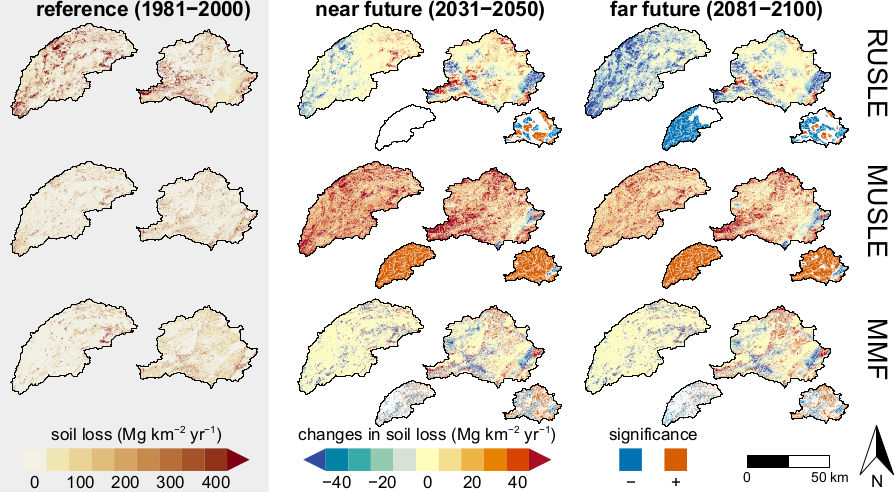
Climate models project increased extreme precipitation for the coming decades, which may lead to higher soil erosion in many locations worldwide. Different soil erosion model concepts are used to assess the impact of climate change on soil erosion at large spatial scales, including models forced by precipitation and by runoff. However, there is little knowledge of the implications of soil erosion model conceptualization on projected soil erosion rates under climate change. Here we assessed the impact of climate change with the three most widely used soil erosion model concepts, i.e. a model forced by precipitation (RUSLE), a model forced by runoff (MUSLE), and a model forced by precipitation and runoff (MMF). We applied the models to two contrasting Mediterranean catchments (SE Spain), where climate change is projected to decrease the annual precipitation sum and increase extreme precipitation, based on the RCP8.5 climate change scenario. Depending on the model, soil erosion is projected to decrease (RUSLE) or increase (MUSLE and MMF) in the study area. While it is difficult to validate future model projections, the differences between the model projections are inherently a result of their model conceptualization, such as a decrease of soil loss due to decreased annual precipitation sum (RUSLE) and an increase of soil loss due to increased extreme precipitation and, consequently, increased runoff (MUSLE). An intermediate result is obtained with MMF, where a projected decrease in detachment by raindrop impact is counteracted by a projected increase in detachment by runoff. We conclude that in climate change impact assessments it is important to select a soil erosion model that is forced by both precipitation and runoff, which under climate change may have a contrasting effect on soil erosion.